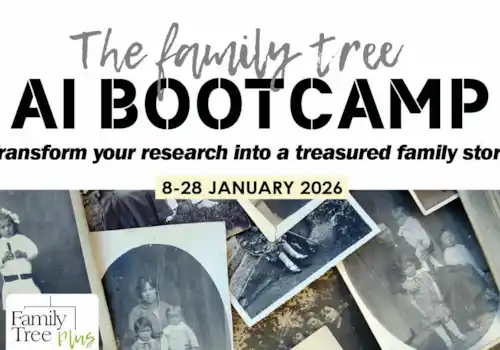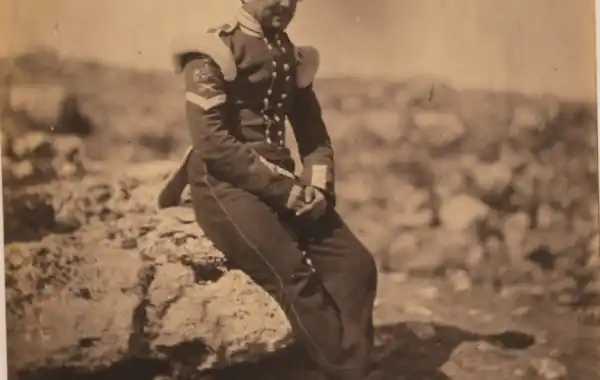Follow the guide below, which will take you through the steps of researching your military ancestors, particularly your soldier ancestors who served in the British Army through the 19th century
From the Battle of Waterloo to the Anglo-Boer War and many other campaigns and conflicts besides there is a wealth of records to be discovered to learn more about your ancestor’s time spent fighting for their country.
Getting Started: What do you already know about your Army ancestor?
The British Army has employed millions of personnel over the centuries, and as such you are very likely to find numerous people by the same name. Thus the more you know about your ancestor, the greater your chance of being able to identify their entries correctly in the records.
So, before diving into records, try to gather as much information as you can from family sources about your Army ancestor. Do they have letters, photographs, diaries, medals, badges that may hold clues as to the your ancestor’s rank, and the unit and locations in which your ancestor served?
Once you have this information, you can begin searching more formal records.
How to learn about Army records
The best place to begin learning about the historic records useful for tracing ancestors in the British Army, are the detailed guides on The National Archives’ website. Use these guides to learn about British Army family history research:
The guides include useful overview ones such as: Military and Maritime Records: an overview to see which of their records can be searched online and which need to be searched in person.
Plus specific guides covering, for instance:
Armed forces records held by other archives
Births, marriages and deaths in the Armed forces
British Army muster rolls and pay lists c1730-1898
These are just a few that are relevant to researching a British Army ancestor in the 1800s. Explore the first link above to find others of interest to you.
Search online records to find your ancestor in the British Army
Service records: For those who served 1760-1913, you need to search the British Army Service records. These have been digitised and are available at findmypast.co.uk
Pension records: Find Chelsea pensioner service records (1760-1920) and pensioner admission and discharge records (1715-1925) on Ancestry
Note that the majority of Army pensioners would have been out-pensioners – ie they would not have been resident at Chelsea, and would have lived in their own home communities and received a monetary pension.
Visit the regimental museum
Search for museums of the regiments and corps of the Army Museums website - visiting the regimental museum can help to bring your ancestor’s years in the British Army to life, helping you visualise the uniforms, learn about the key battles, regimental motto and offering access to documents and personal items from soldiers.
Military history – as it happened. Read the news!
You may find your ancestor, or coverage of events they were involved in, published in the Gazettes, which include details of major battles and gallantry awards.
(The Gazette website is free of charge to read and includes digitised pages of the past publications. It can be hard to search so do persevere. You may wish to use your preferred search engine, such as Google, and search on your key words and include the phrase ‘The Gazette’ – this can turn up search results and take you directly to the page in the Gazette.) Even though the majority of our military ancestors are not mentioned by name in the Gazette, the new coverage of the events, as reported in close-time, helps us to learn about our ancestor’s times from a contemporary viewpoint.
Other newspapers & journals
Contemporary newspapers often reported on military actions, notable individuals, and regiments. The newspapers in the British Newspaper Archive (also found on Findmypast) can be valuable resources for finding mentions of your ancestor, especially if they were involved in significant battles or events.
How to decode Army uniform photographs
Make a careful note of uniform details
- Photos of your ancestor in uniform can hold crucial clues about the unit they served in, their rank, and period of service.
- Study any photographs you may be lucky enough to have of your ancestor in uniform, being sure to scrutinise: the cap badge, shoulder titles, shoulder epaulets, badges of rank or skills badges on the sleeves.
- The devil is in the detail when it comes to family history research, and never more so than when doing military family history research. Set yourself a task to read widely on the topic of Army uniforms, to help you spot every last clue in your ancestral images.
- Such details can help you identify your ancestor in the records from among the many other possible people by that name.
Track down illustrations of soldiers in your ancestor’s regiment
It is very likely that you won’t have a photograph of your Victorian ancestor in uniform, not least because it was only in the second half of the 19th century that photography became more widely accessible. Never the less it can be very interesting to track down illustrations of soldiers and officers who served in your ancestor’s regiment, during the era in which they served, to gain an idea of the uniform they would have worn. Search the internet, for, for example ‘Richard Simkin’ AND ‘British Arm’ AND the name of your ancestor’s regiment.
Understanding the historical context of your ancestor's time in the Army
To better understand your ancestor's experience, it's crucial to place their service within the broader historical context. The 1800s were a tumultuous century for the British Army, with numerous conflicts across the globe.
5 key battles & campaigns through the 1800s
While we are all to conscious of the World Wars 1 and 2 of the 20th century, throughout the 19th century our ancestors serving in the British Army saw a stream of battles and campaigns, many of which have now entered the history books.
The Napoleonic Wars (1803-1815): This series of conflicts between Napoleonic France and various European coalitions was one of the most significant military events of the 19th century. Key battles include: The Battle of Waterloo (1815): Perhaps the most famous of all, where the Duke of Wellington led British and allied forces to defeat Napoleon, ending his rule.
The Crimean War (1853-1856): Fought primarily between Russia and an alliance of Britain, France, the Ottoman Empire, and Sardinia, the Crimean War is notable for the Siege of Sevastopol (Sebastapol) and the Charge of the Light Brigade at the Battle of Balaclava.
The Indian Rebellion of 1857: Also known as the Indian Mutiny, this was a major, but ultimately unsuccessful, uprising against British rule in India. It marked a significant shift in British policies in India.
The Anglo-Zulu War (1879): A notable conflict in South Africa where the British Army fought against the Zulu Kingdom. The Battle of Isandlwana and the defence of Rorke's Drift are particularly famous.
The Second Anglo-Afghan War (1878-1880): This war was fought to ensure British control over Afghanistan, in the face of opposition from Russia, culminating in the Battle of Kandahar.
Find out more about your soldier ancestor in the British Army in the 1800s
To learn more about archival records in which to search for your British Army soldier ancestors through the 1800s, see the October 2024 issue of Family Tree. This is published from 13 September 2024. Click here to buy.







